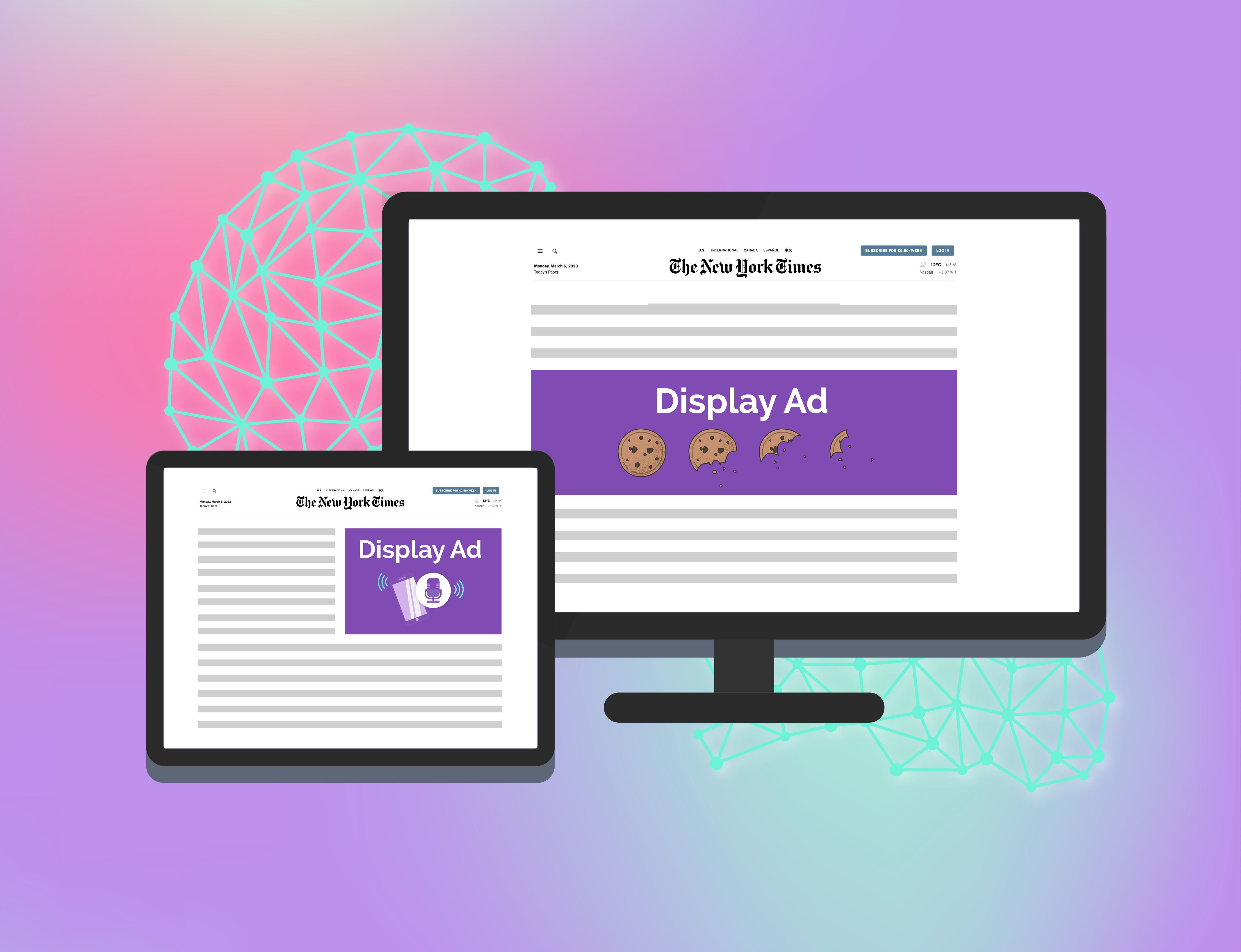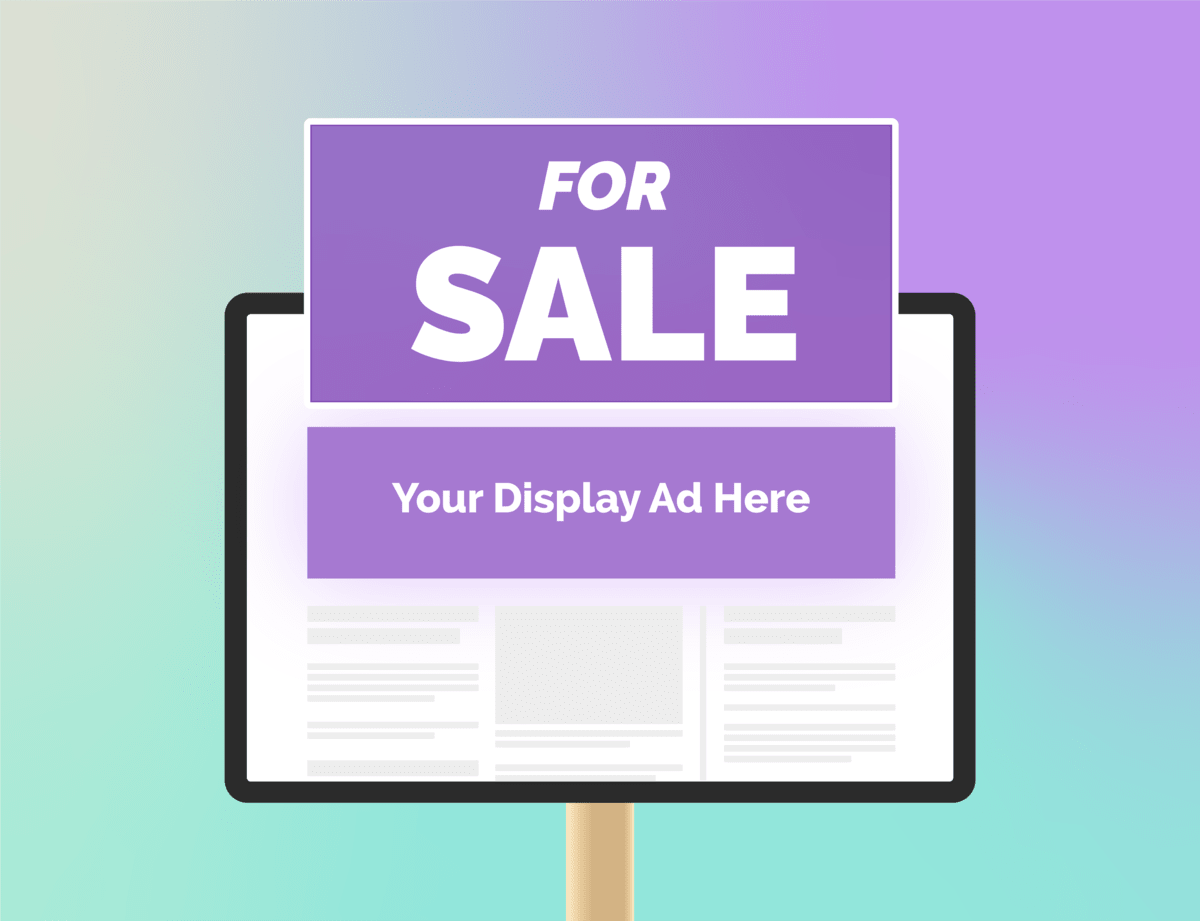Seventy-three percent of people think ad experiences are more enjoyable when they feel personalized and relevant, according to research by Amazon Ads and Omnicom Media Group.
But until recently, personalizing digital advertising campaigns at scale was a time-consuming and expensive process.
Now, though, advancements in adtech are enabling advertisers to use automation and algorithms to scale up and deliver hyper-personalized ad campaigns.
This process is called dynamic creative optimization, or DCO. DCO is a data-driven subset of programmatic advertising that serves dynamic ads tailored to each individual user.
With DCO, advertisers can now use real-time data to create thousands of relevant and personalized ads at scale, leading to better engagement and higher conversion rates.
If you’re looking for ways to improve the performance of your display ads, it’s a good idea to get familiar with the trends set to dominate the DCO space in the coming years.
This article will take you on a deep dive into the future of DCO so that you can incorporate it into your digital marketing efforts.
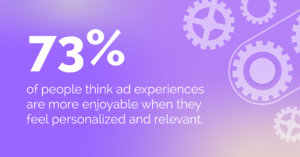
1. Moving into a Cookieless World
The game is nearly over for third-party cookies, presenting marketers with the challenge of finding new ways to reach target audiences and attribute conversions to their ad creatives.
As we move toward a cookieless future, collecting first-party data will become increasingly important — especially for those who want to use DCO to make campaigns more effective.
Dynamic ad campaigns of the future will leverage a mix of first-party data, Google’s Privacy Sandbox, and contextual targeting to reach users with the most relevant ads.
2. Diversified Data Sources
Advertisers are already looking for creative ways to collect data and target users in other ways as they prepare for the cookieless future.
Although it will take some time to adapt to this new reality, collecting first-party data may turn out to be advantageous for brands since they will have more control over data quality, and the data sets they produce will be unique to them.
Ways advertisers can target users without third-party cookies include:
- Customer relationship management (CRM) data
- Purchase history
- Geolocation
- Mobile tagging
- Device IDs
- News, weather, and sporting events
On the publishing side, publishers are becoming increasingly aware of the amount of data they have at their fingertips that they can leverage to drive better results for advertisers on their platforms.
Therefore, with DCO, advertisers can combine contextual targeting with a publisher’s data to deliver highly-personalized ads that improve conversions and increase sales.
For example, if you’re reading an article about luxury sustainable tourism in Vietnam on Condé Nast Traveler in the run-up to summer, a sustainable deluxe travel company might serve you dynamic ads about their Vietnam travel packages. Since you’re already interested in sustainable luxury travel in Vietnam and the vacation season is approaching, you’ll likely be more receptive to the ad.
3. Using Google Topics with DCO
The implications of the cookieless world don’t stop at data collection. We’ll also start to see an increased reliance on Google Topics as a DCO tool in the absence of third-party cookies.
Google Topics is the next evolution of Google’s original cookieless solution, Federated Learning of Cohorts (FLoC). It offers greater privacy protection because it doesn’t share or rely on the actual sites a user visited — it only collects information about their interests.
Although it doesn’t facilitate 1:1 personalization, Google Topics can still help advertisers build a strong connection with their target audiences based on their interests.
When a user turns a Topic on or off, they are communicating essential information about their likes, dislikes, and interests — information that brands can use to better understand each individual user as a human.
Plus, Google Topics offers 348 audience segments, which is more than twice the 123 affinity/interest segments within the DV360 buying platform, facilitating even more granular targeting.
4. Improved Campaign Optimization
As machine learning and artificial intelligence (AI) continue to evolve, advertisers will be able to better optimize their ad creatives in real-time and improve the performance of their campaigns.
When setting up a DCO campaign, advertisers will be able to upload creative components such as images, headlines, and copy, and allow the algorithms to decide which creative is most relevant to each impression.
Advertisers can use DCO to encourage users to return to abandoned carts or display products that align with their personal interests. For example, if a cycling enthusiast is browsing a sporting goods online store, a cycling gear brand will be able to serve them ads for helmets and other accessories that might be of interest to them.
As AI’s capabilities expand, it will be able to optimize based on more in-depth data, enabling advertisers to automatically generate an ad for any given impression.
5. DCO Will Become More Accessible
Although an increasing number of brands are aware of the benefits and scalability of DCO, few companies are actually taking advantage of this innovative approach to programmatic advertising.
One of the main reasons for this is that they don’t know where or how to start implementing dynamic ads into their brand’s everyday efforts.
For this reason, many advertisers partner with programmatic advertising experts like Grapeseed Media to plan, manage, and implement DCO strategies. This eliminates the guesswork as well as the steep learning curve, making DCO more accessible and helping advertisers maximize their return on ad spend.
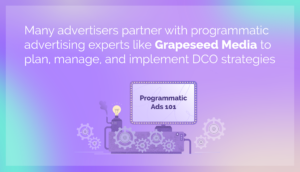
Expert partners provide an end-to-end approach to DCO that empowers advertisers to analyze and optimize creative elements in real-time while responding to consumer behaviors. Programmatic specialists can also tailor ad messaging more effectively to maximize the impact of each impression.
6. Increased Agility
Instantaneous ad creative optimization is one of the biggest advantages of DCO. Ad creatives that perform poorly can be automatically dropped from the rotation to maximize budget and impressions and deliver insights that improve current and future campaigns.
As DCO becomes more ubiquitous, we’ll see an increase in the agility needed to produce new iterations of creatives as more data comes in.
7. More Use of CMPs in the DCO Process
A creative management platform (CMP) is a collection of tools required for running DCO campaigns. This set of tools allows advertisers to design, produce at a large scale, test, and optimize ad creatives to come up with the options that resonate most with their audiences.
The implementation of DCO is technically complex, but we will see the growing use of CMPs to simplify the process for advertisers and adtech solution providers by allowing them to assemble dynamic creative ads without profound technical skills.
8. More Industries Will Use DCO
You may think DCO is only relevant to e-commerce businesses, but in reality, dynamic creative optimization can be used across almost all industries and verticals to improve campaign performance.
For example, geo-targeted DCO campaigns can promote local businesses, events, or special offers. Additionally, since DCO works well for product-based campaigns that target people with specific interests, it can be applied across multiple industries.
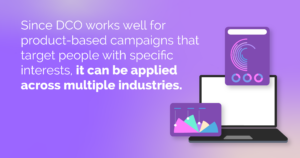
The difference will be in how each industry integrates DCO. For example, the automotive industry may use geotargeting because certain vehicles are only available in certain regions.
On the other hand, healthcare providers need to take a tactful approach to advertising that doesn’t feel invasive. DCO can help them deliver targeted campaigns without relying on cookies or sensitive data.
9. DCO Becomes a Full-Funnel tool
Until recently, DCO has mainly been used in retargeting campaigns that target users who have already shown an interest in a product.
However, as DCO capabilities expand, we will likely see it being leveraged at every step of the customer journey — from initial awareness to the call-to-action (CTA).
10. Accelerated Growth
DCO adoption is likely to go through a period of accelerated growth between 2023 and 2029. Therefore, early adopters will have an advantage over their competitors and be able to capitalize on the benefits of DCO to generate more revenue and boost their bottom line.
The drivers behind this growth include:
- The rising demand for better customer experiences, as well as improved interaction and communication with consumers in real-time or in a more informed and efficient manner.
- The growing need for brands to reduce operational costs while maximizing revenue. With DCO, advertisers can modify their campaign strategies in real-time to improve return on ad spend.
Stay Ahead of the Curve with Dynamic Creative Optimization
At a time when brands, retailers, and media are all competing for real estate on consumers’ screens, personalizing creatives and messaging to resonate with bespoke audience segments is critical for improving ad performance and effectiveness.
As advertisers tighten their belts and brace for a recession, they’ll be looking for any means possible to boost revenue while reducing costs — and DCO can help them do just that.
Curious about what a DCO campaign could look like for your business? Check out this article about how working with a programmatic specialist can help you customize your creatives.

